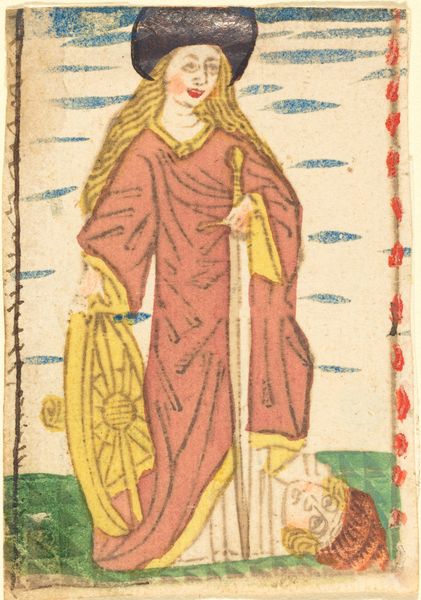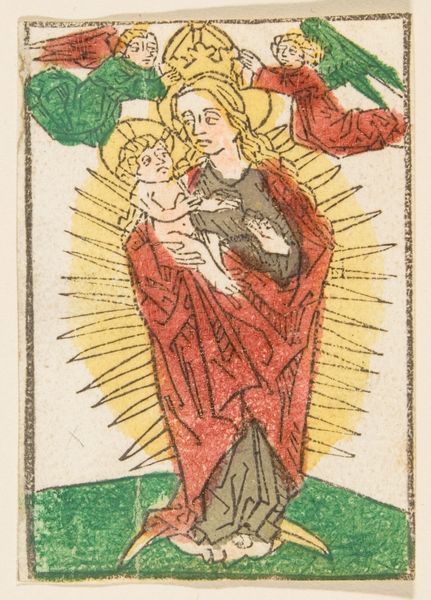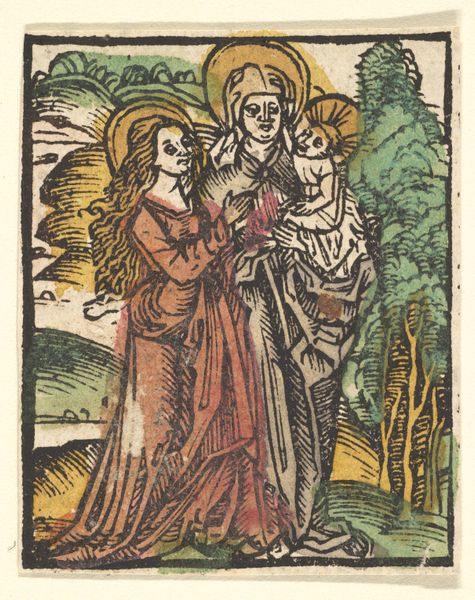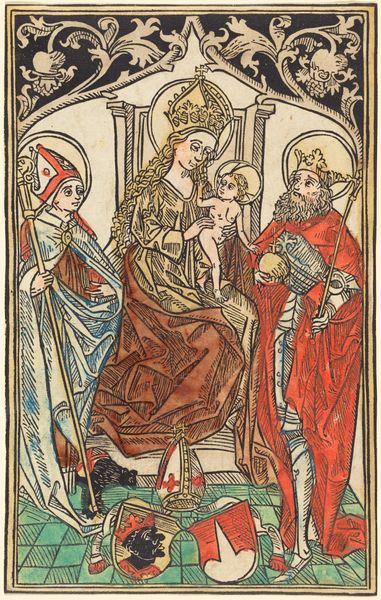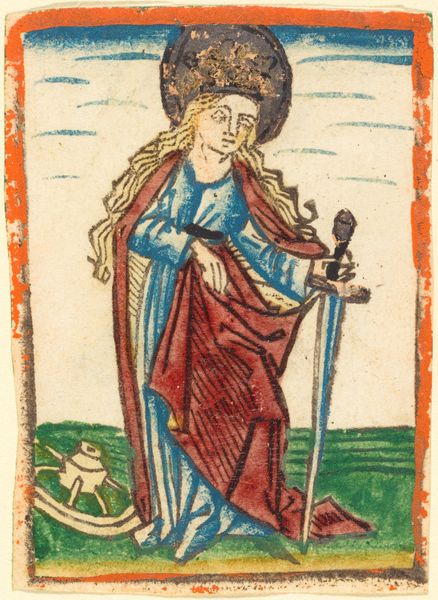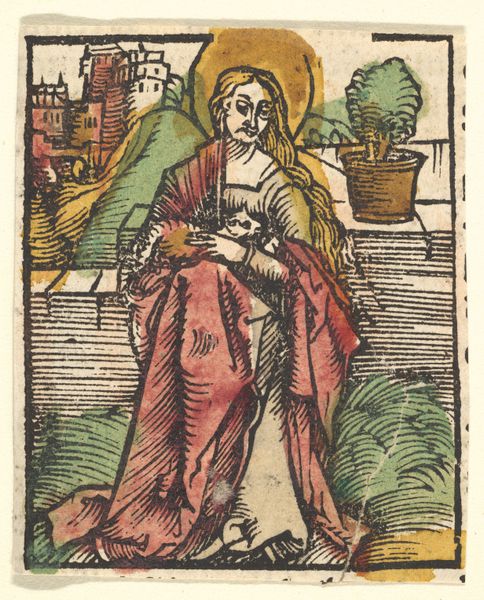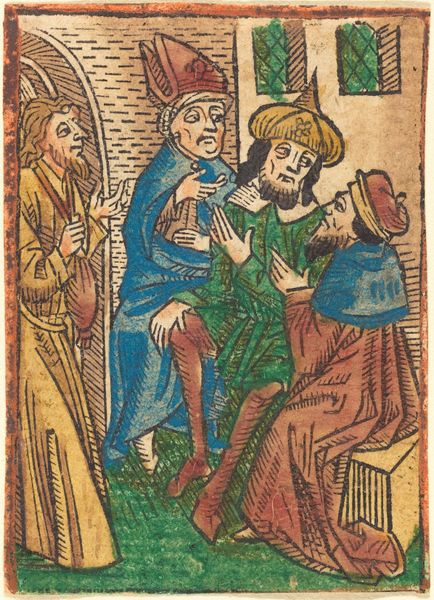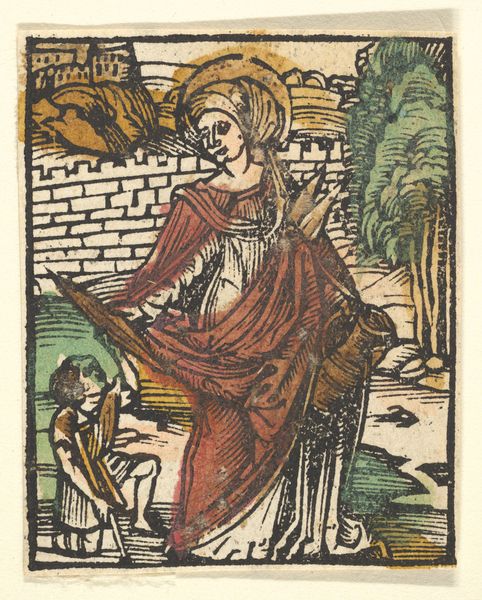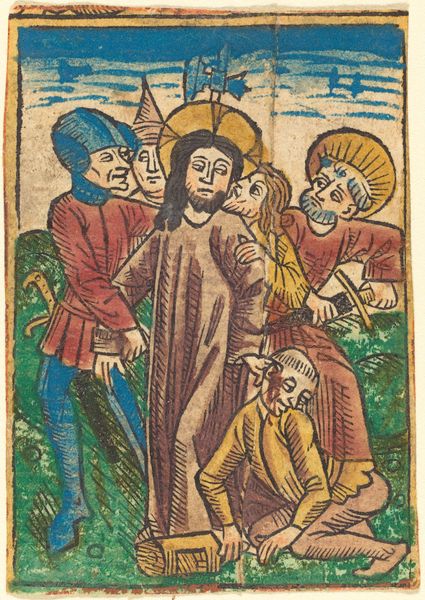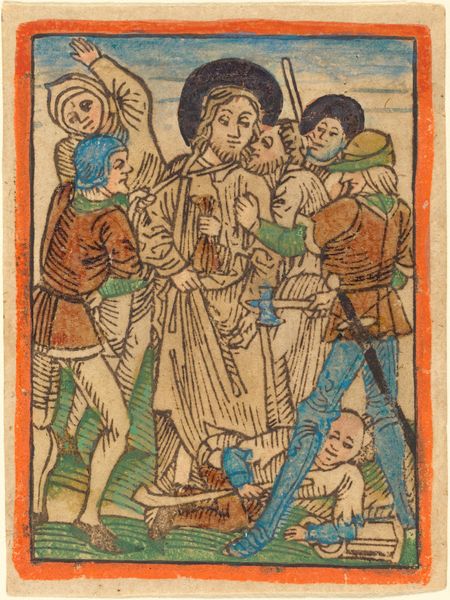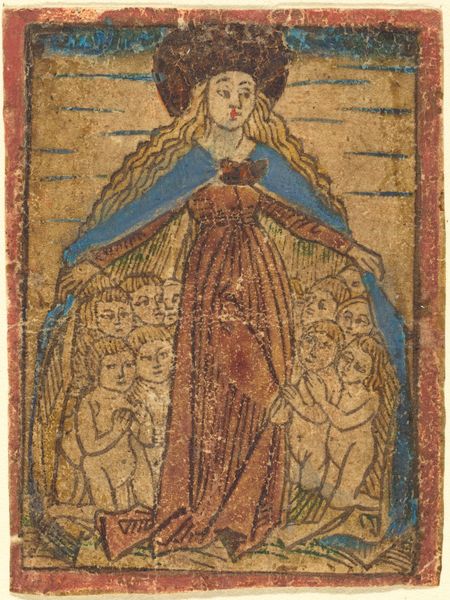
print, woodcut
#
allegory
# print
#
figuration
#
woodcut
#
history-painting
#
northern-renaissance
Copyright: National Gallery of Art: CC0 1.0
Curator: Let’s examine this interesting woodcut, Madonna as a Protectress, made anonymously around 1470-1480, in the Northern Renaissance style. Editor: It’s quite striking, actually. The linear quality and the somewhat muted color palette give it an interesting raw feeling, even with its overt religious symbolism. It feels very immediate. Curator: That immediacy likely comes from its function. Prints like this were relatively accessible, devotional objects, reflecting the rise of both piety and print culture at the time. Notice how Mary’s gesture embraces the figures surrounding her? Editor: Yes, she's spreading her cloak. You can almost feel the weight of that garment. What's also fascinating is the texture achieved with the woodcut; the grain feels almost like a woven fabric in itself. Were these things hand-colored often? Curator: Indeed. The added color heightened the image's appeal, transforming a mass-produced item into something personalized. It shows an understanding of material value even in readily available goods. The social impact of such images shouldn't be overlooked—they helped cement the image of the Madonna as a figure of maternal protection during periods of social anxiety. Editor: Exactly. The use of easily reproducible materials made this kind of visual protection widely accessible, and also democratized images. I am stuck on how humble materials – wood and pigment – became invested with so much hope and spiritual meaning. Curator: The format lent itself to the rapid dissemination of a specific idea. By reproducing an image of collective salvation it acted as a constant reinforcement of both piety and social hierarchy. Editor: Looking closely, it’s impossible not to be taken in by the physical labor that went into the carving and the printing. It certainly challenges conventional assumptions about artistic skill when assessing historical movements and what images of this kind represented in social life. Curator: It does challenge traditional boundaries. Reflecting on this piece allows us to ponder art's accessibility, and consider not just high art's patrons, but the broader audience for printed images. Editor: Agreed. It compels one to ponder the real impact that readily made objects of veneration would have had on individual belief and popular practices.
Comments
No comments
Be the first to comment and join the conversation on the ultimate creative platform.
